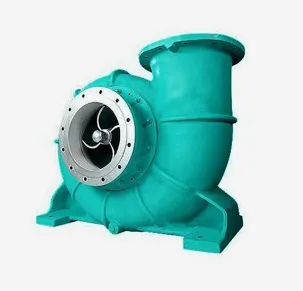English
- Afrikaans
- Albanian
- Amharic
- Arabic
- Armenian
- Azerbaijani
- Basque
- Belarusian
- Bengali
- Bosnian
- Bulgarian
- Catalan
- Cebuano
- Corsican
- Croatian
- Czech
- Danish
- Dutch
- English
- Esperanto
- Estonian
- Finnish
- French
- Frisian
- Galician
- Georgian
- German
- Greek
- Gujarati
- Haitian Creole
- hausa
- hawaiian
- Hebrew
- Hindi
- Miao
- Hungarian
- Icelandic
- igbo
- Indonesian
- irish
- Italian
- Japanese
- Javanese
- Kannada
- kazakh
- Khmer
- Rwandese
- Korean
- Kurdish
- Kyrgyz
- Lao
- Latin
- Latvian
- Lithuanian
- Luxembourgish
- Macedonian
- Malgashi
- Malay
- Malayalam
- Maltese
- Maori
- Marathi
- Mongolian
- Myanmar
- Nepali
- Norwegian
- Norwegian
- Occitan
- Pashto
- Persian
- Polish
- Portuguese
- Punjabi
- Romanian
- Russian
- Samoan
- Scottish Gaelic
- Serbian
- Sesotho
- Shona
- Sindhi
- Sinhala
- Slovak
- Slovenian
- Somali
- Spanish
- Sundanese
- Swahili
- Swedish
- Tagalog
- Tajik
- Tamil
- Tatar
- Telugu
- Thai
- Turkish
- Turkmen
- Ukrainian
- Urdu
- Uighur
- Uzbek
- Vietnamese
- Welsh
- Bantu
- Yiddish
- Yoruba
- Zulu
Telephone: +86 13120555503
Email: frank@cypump.com
Aug . 17, 2024 18:11 Back to list
Submersible Sewage Cutter Pump Manufacturers and Their Key Features
Overview of Submersible Sewage Cutter Pump Factories
In the modern industrial landscape, the rise of submersible sewage cutter pumps has revolutionized the management of wastewater and sewage systems. These pumps are designed to operate underwater and are commonly used in municipal and industrial applications for the efficient handling of wastewater, stormwater, and other liquids containing solids. Within this context, submersible sewage cutter pump factories play a critical role in manufacturing and delivering these essential tools.
What Are Submersible Sewage Cutter Pumps?
Submersible sewage cutter pumps are high-performance pumps that are capable of cutting and grinding solids into smaller particles before pumping them away. This capability is crucial in environments where wastewater may contain large solids—such as leaves, paper, or other debris—that could clog traditional pumps. The cutter mechanism, usually a series of rotating blades, allows these pumps to handle tough sewage with ease while preventing system backups and blockages.
Importance of Factories in Production
The factories dedicated to the manufacture of submersible sewage cutter pumps are the backbone of plumbing and wastewater management industries
. These facilities leverage advanced technology and skilled labor to produce pumps that meet various standards and specifications, ensuring that the end product can withstand the rigors of continuous use in often harsh environments.From the design phase to the assembly line, these factories streamline the production process. Quality assurance is vital, with rigorous testing performed at various stages to ensure that each pump meets both national and international quality standards. This commitment to quality helps maintain the reliability and durability expected of submersible sewage cutter pumps.
Technological Advancements
submersible sewage cutter pump factories

The submersible sewage cutter pump industry has witnessed significant technological advancements in recent years. Manufacturers are increasingly incorporating smart technology into their designs, enhancing features like energy efficiency and ease of maintenance. Automation, such as IoT-enabled monitoring systems, allows for real-time tracking of pump performance and condition, leading to predictive maintenance schedules that can minimize downtime.
In addition, the materials used in construction have evolved. Modern pumps often utilize corrosion-resistant materials, such as stainless steel or high-density polyethylene, which extend the lifespan of the product in corrosive environments. Improved engineering designs also help in optimizing performance and reducing energy consumption, aligning with global sustainability initiatives.
Global Market Trends
The global demand for submersible sewage cutter pumps is growing, driven by increasing urbanization, industrialization, and rising environmental concerns. As cities expand, there is a greater need for effective sewage and wastewater management solutions, which has led to heightened investment in the manufacturing sector.
Countries with extensive infrastructure projects are seeing a surge in demand for these pumps. As a result, factories specializing in submersible sewage cutter pumps are not only expanding their production capabilities but are also enhancing their supply chain networks to ensure timely distribution.
Conclusion
In conclusion, submersible sewage cutter pump factories occupy a vital position within the larger context of wastewater management and industrial operations. Their role in producing advanced, reliable, and efficient pumping solutions cannot be understated. As technology continues to advance and the demand for such equipment rises, these factories will play an even more critical role in safeguarding public health and maintaining environmental standards across the globe. The future of submersible sewage cutter pumps looks promising, with continual innovation and an unwavering focus on quality driving the industry forward.
-
ISG Series Vertical Pipeline Pump - Chi Yuan Pumps Co., LTD.
NewsJul.30,2025
-
ISG Series Vertical Pipeline Pump - Chi Yuan Pumps Co., LTD.|energy-efficient fluid handling&industrial durability
NewsJul.30,2025
-
ISG Series Vertical Pipeline Pump - Chi Yuan Pumps | Advanced Engineering&Industrial Efficiency
NewsJul.30,2025
-
ISG Series Pipeline Pump - Chi Yuan Pumps | High Efficiency, Energy Saving
NewsJul.30,2025
-
ISG Series Vertical Pipeline Pump-Chi Yuan Pumps|High Efficiency&Reliable Performance
NewsJul.29,2025
-
ISG Series Vertical Pipeline Pump|High Efficiency&Low Noise
NewsJul.29,2025










